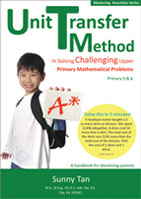
We all know that times have changed, but who would have imagined that the foundational mathematical problem solving skills we were brought up on mean practically nothing for our next generation?
The mathematics questions found in primary schools these days can leave even the most academically inclined parents stumped! Regardless whether you’ve scored A* in your own PSLE maths paper decades ago, we’re sure you’ve had difficulty trying to guide your child with his/her homework using your old-school algebraic equations. Even the relatively newer model approach, involving drawing rectangular boxes/blocks, doesn’t always work.
Perhaps the alternative Heuristics approach will put those seemingly impossible-to-solve problem sums in a “less intimidating” light. Heuristics simply refers to rules, processes or methods that the student can discover... Click Here to continue reading




